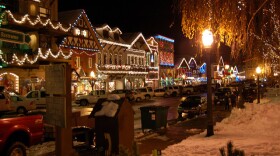When the Berlin Wall fell in 1989, Leipzig, Germany, was in economic ruin.
“They had an unemployment rate here in the mid-1990s of over 25 percent,” he said. “Now they’re under 5 percent.”
And it's gaining a reputation as "The New Berlin." Porsche, BMW and DHL all have major operations there now. And this city of more than 500,000 people is becoming a new center for art, music, and tourism.
Johannes Gaebler is a tour guide in Germany. He’s originally from Berlin, and was first in Leipzig in the early 1990s, not long after Germany was reunified.
He says Leipzig used to be gray and smelly, but no longer.
“You have on one hand a very renovated (city) center,” Gaebler said. “On the other hand, you have not far away old industrial areas with artists.”
“Artists are squatting in these buildings, as they used to do in New York in the 1960s and 1970s,” he said. “Rents became too expensive (in Berlin) … so they had to move away. They went to Leipzig.”
Things To See
Connewitz: An area of the city reminiscent of New York’s SoHo or Greenwich Village.
St. Thomas Church: Martin Luther preached here. Johann Sebastian Bach used to be the director of music. Wolfgang Amadeus Mozart has played the church’s organ. And Richard Wagner was baptized in this church. History is an understatement.
St. Nicholas Church: It was built in the 1100s, but its most recent claim to fame is from 1989, when crowds began gathering here on Monday evenings to protest communist rule. The massive demonstrations were peaceful, and the church quickly became a center of the turning tide against the East German authorities.







